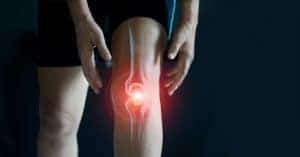Osteoarthritis

Osteoarthritis

At Beaver Valley Foot Clinic and our sister company Center for Joint Health, we strive to help all of our patients with effective, minimally invasive pain relief solutions for osteoarthritis. A second, related goal is to restore your lost function and mobility. We want our patients pain-free and able to enjoy the activities they love.
Hybrid treatments, like the Vampire procedure enhanced with stem cells, deliver facelift-like results. They aren’t designed to take the place of surgery, however, and it’s really not a contest. In fact, patients actively choose less-invasive procedures over “normal” surgical procedures every day. The wrinkle-relaxing “injectable facelift” medication Botox is a perfect example. Highly popular facial fillers like Juvederm are another.
Our approach is unique:
Being different can be a great thing—especially if what you’re doing isn’t working. We successfully help or cure some of the most chronic, frustrating, and treatment-resistant conditions seen by doctors of all types. This includes plantar fasciitis, knee osteoarthritis, rotator cuff injuries, and even stubborn low back pain.
We do this by taking a regenerative approach. This lets us address 2 core aspects of many common (and not-so-common) joint conditions.
The first is reversing tissue damage. All injuries involve some level of tissue damage. Especially when this damage is chronic or long-standing the body can’t heal itself properly. Our doctors can now encourage a more complete healing response, including tissue regeneration, using treatments like stem cell therapy.

The second is reversing ligamentous laxity. Ligaments are the tough bands of connective tissue hold our bones together to form joints. These ligaments become stretched in many chronic injuries, making the joint less stable. This can also occur during serious acute injuries when the ligaments are stretched suddenly under too much force. An example is a very severe ankle sprain. Treatments such as stem cell therapy can correct ligamentous laxity, tightening joints and adding stability.
Can osteoarthritis lead to complications or other health issues?
Yes, osteoarthritis can lead to various complications and other health issues, especially if not properly managed. Some of the complications associated with osteoarthritis include:
1. Chronic Pain: Osteoarthritis causes persistent joint pain, which can significantly impact the quality of life, leading to chronic pain and discomfort.
2. Limited Mobility: As the condition progresses, joints can become stiff and lose flexibility, limiting mobility and making it challenging to perform everyday activities.
3. Disability: In severe cases, osteoarthritis can cause significant joint damage, leading to disability. This can affect a person’s ability to work, maintain social relationships, and live independently.
4. Muscle Weakness: Due to pain and limited movement, the muscles around affected joints may weaken, leading to muscle atrophy and reduced strength.
5. Depression and Anxiety: Chronic pain and limited mobility can lead to emotional challenges, including depression and anxiety. Coping with long-term pain can take a toll on mental well-being.
6. Sleep Disturbances: Pain and discomfort from osteoarthritis can interfere with sleep, leading to sleep disturbances and fatigue, which further impact overall health.
7. Obesity: Osteoarthritis can contribute to weight gain and obesity. Excess body weight places additional stress on joints, worsening osteoarthritis symptoms and potentially leading to further joint damage.
How does weather or climate affect osteoarthritis symptoms, if at all?
Weather or climate changes can affect osteoarthritis symptoms for some individuals. Cold and damp weather might increase joint pain and stiffness, making movement more challenging. Barometric pressure fluctuations can also influence pain levels. However, not everyone with osteoarthritis is sensitive to weather changes.
Scientific studies on this topic have yielded mixed results, indicating that the relationship between weather and osteoarthritis symptoms varies among individuals. While some people report increased discomfort during certain weather conditions, others do not experience significant changes. It’s a highly individual response, and managing symptoms through medical advice, exercise, and lifestyle adjustments remains crucial.
Which Joints Are Commonly Affected By Osteoarthritis?
Here are the joints that are affected most commonly by osteoarthritis:
1. Knees: Knees bear significant amount of weight, which easily makes them prone to wear.
2. Hands: Especially the joints in the fingers and the base of thumb because of the amount of work they perform.
3. Hips: These are important fir weight bearing and mobility!
4. Spine: Especially the lower back and neck regions.
How Does Osteoarthritis Progress? Are There Long-Term Effects Of It?
Osteoarthritis will progress gradually as joint cartilage wears down overtime. At first, people can notice mild pain and even stiffness after activities, which worsens overtime and as you continue to use the joint. As the cartilage degrades, someone of your bones will start to run together, which causes increased problem and even affects the mobility. This can result into small bone spurs, which will restrict your mobility and discomfort further.
In long term, Osteoarthritis will continue to impact your daily activities and quality of life, you can experience chronic pain, joint stiffness and can even limit physical activities. Furthermore, reduced mobility leads to fatigue and frustrations or even depression. In advanced stages, joints will lose their functionality and can even cause severe cases that will require surgical interventions.
Is It Possible To Prevent Osteoarthritis? If So Then How?
If you want to prevent osteoarthritis or even slow it’s progression then here are some tips to help you out:
1. Maintaining A Healthy Weight: Joints bear a lot of weight, which puts a lot of stress on them. If you are overweight then this can make this problem worse, so try managing your weight.
2. Stay Active: Try low-impact exercises, and avoid strenuous ones as they can damage your joints.
3. Practice Good Posture: It easily helps minimizing strain especially on your spine
4. Eat Anti-inflammatory Foods: It supports joint health!
